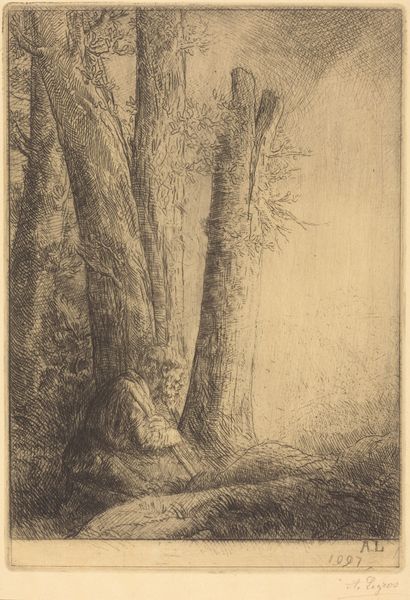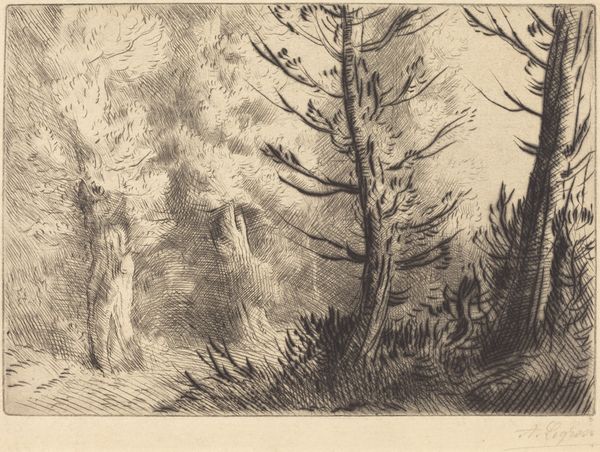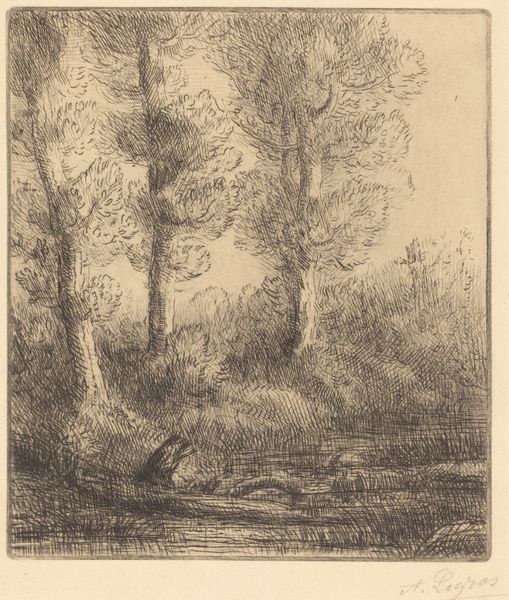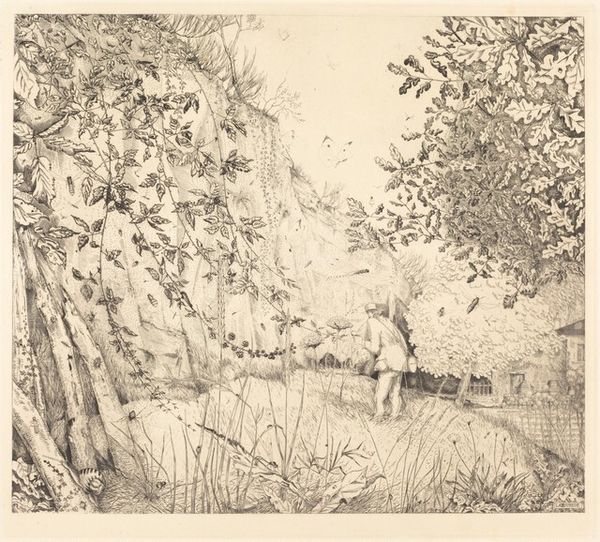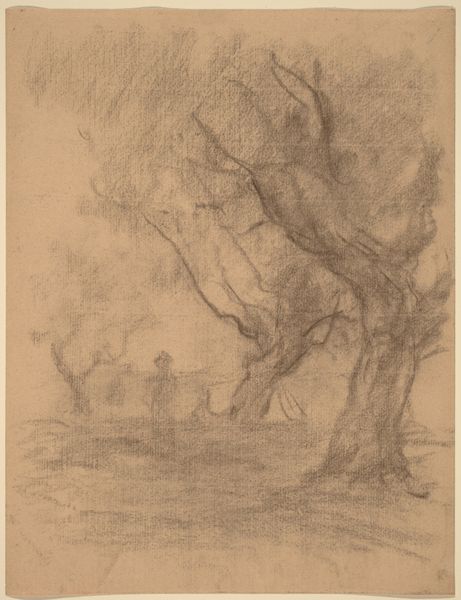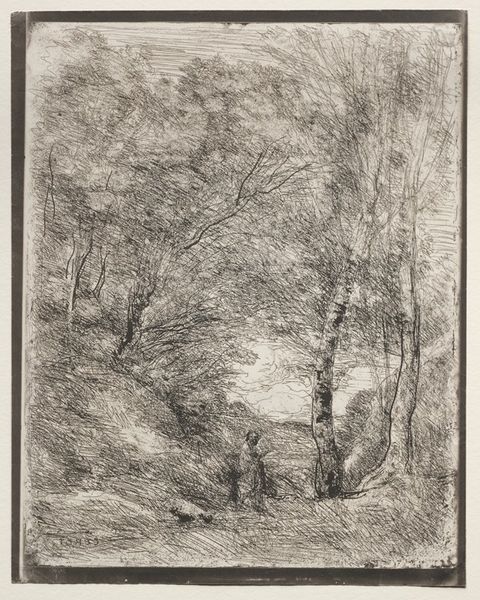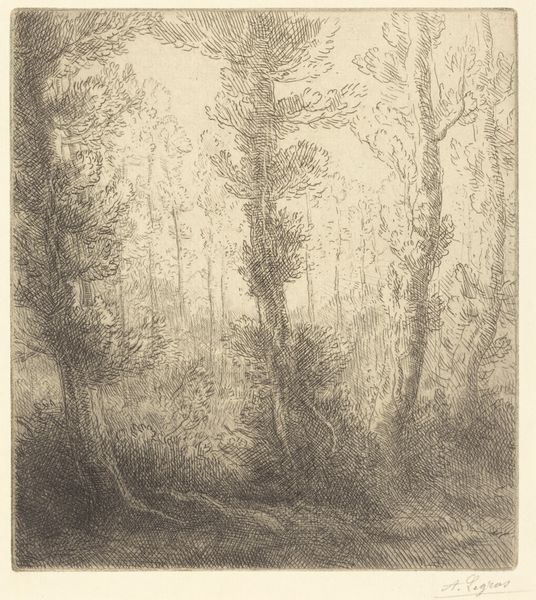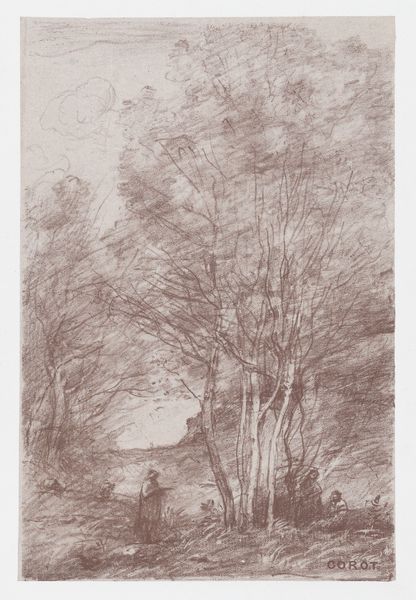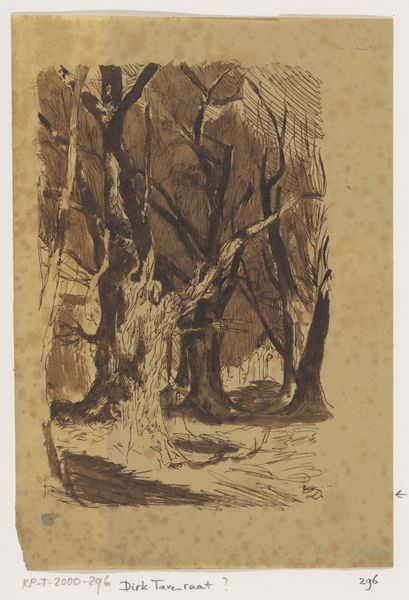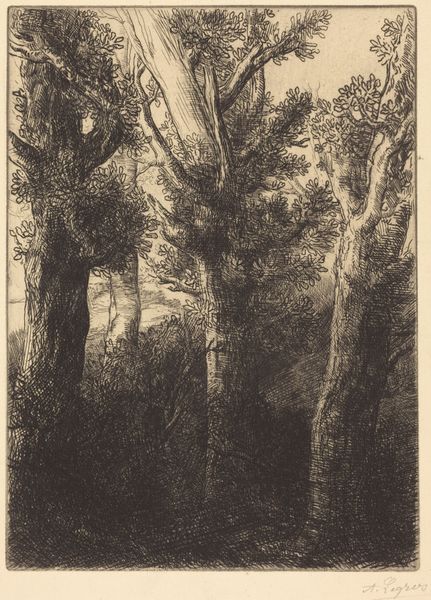
drawing, pencil
#
drawing
#
impressionism
#
pencil sketch
#
landscape
#
etching
#
figuration
#
pencil drawing
#
forest
#
pencil
Dimensions: height 326 mm, width 245 mm
Copyright: Rijks Museum: Open Domain
Curator: We're looking at "Man onder bomen in bos," or "Man under trees in forest," by Piet Meiners. It was created sometime between 1867 and 1903 and resides here at the Rijksmuseum. Editor: It feels very dreamlike, almost a fleeting memory captured in graphite. The composition leads your eye straight to that solitary figure. Curator: The work is primarily a pencil drawing. We know that Meiners often sketched outdoors, attempting to capture the fleeting effects of light and atmosphere in the landscape. Editor: I am struck by the materiality here; the roughness of the pencil on paper is very palpable, the stark whiteness highlighting its own production, a constant reminder of the labour involved in the drawing’s creation. It seems he wants to remind the viewer of the working hand. How does it reflect the societal landscape of art production at the time? Curator: Well, remember that impressionism, in general, emerged partly as a reaction against the increasingly industrialized world. Artists were looking to capture immediate experiences and direct perceptions of the world around them. They had also new kinds of pre-prepared colours and portable easels for travelling further afield in search of such landscapes. Editor: So, it's about individual artistic expression breaking free from traditional academic constraints, but at the same time enabled by broader technological innovations. Curator: Precisely. Think about the burgeoning art market too. Works like this become desirable precisely for their "authenticity"—the idea of the artist's unique hand. Also, a quick inexpensive way to reproduce an image to be sold or copied. Editor: That’s very interesting. It also feels like the work is unfinished, somehow questioning what constitutes "finished art", given its sketched nature and what might seem unfinished edges to many museum goers. Curator: That tension you pinpoint speaks to a broader questioning of artistic conventions during that era. Art increasingly reflected social transformations, shifting values, and the expanding role of artistic production. Editor: So this quick sketch manages to tell us stories of art and also labour history and how those landscapes can shape and become commodities themselves. Fascinating. Curator: Absolutely, offering a glimpse into the complex relationship between art, society, and the environment.
Comments
No comments
Be the first to comment and join the conversation on the ultimate creative platform.
